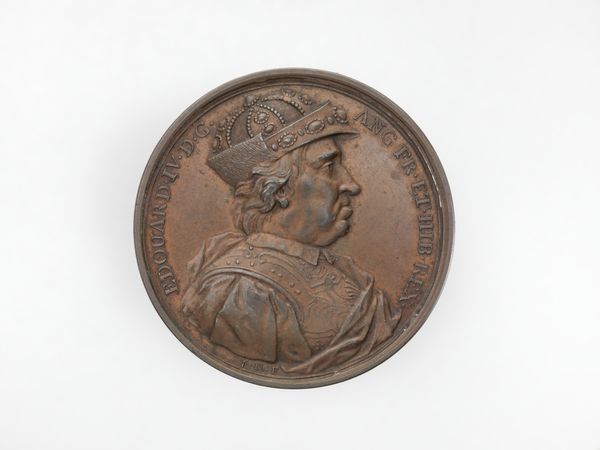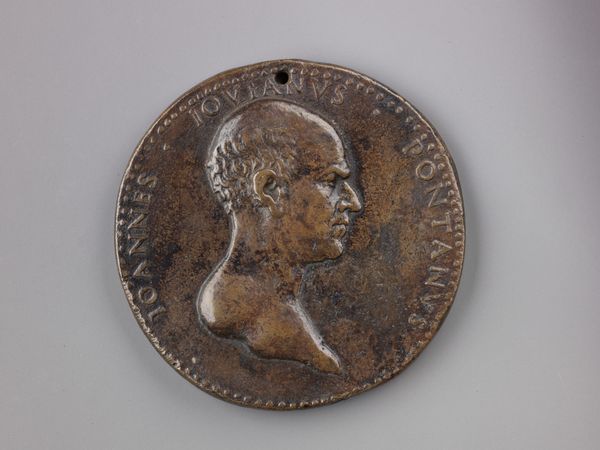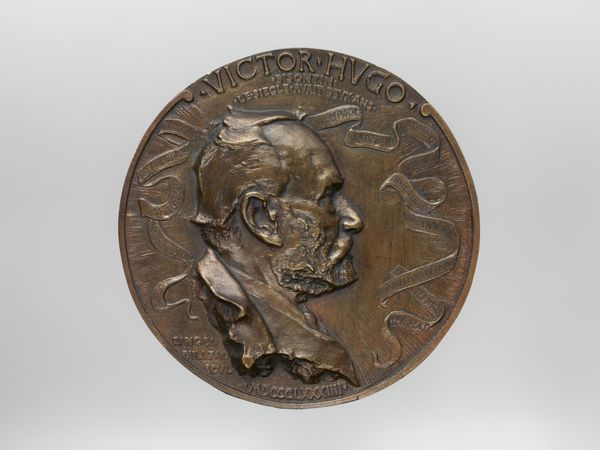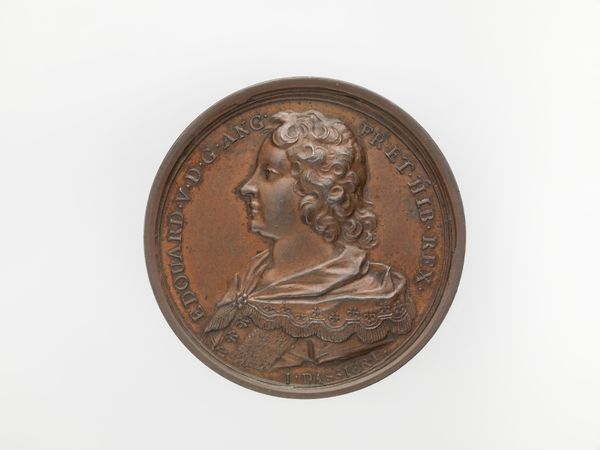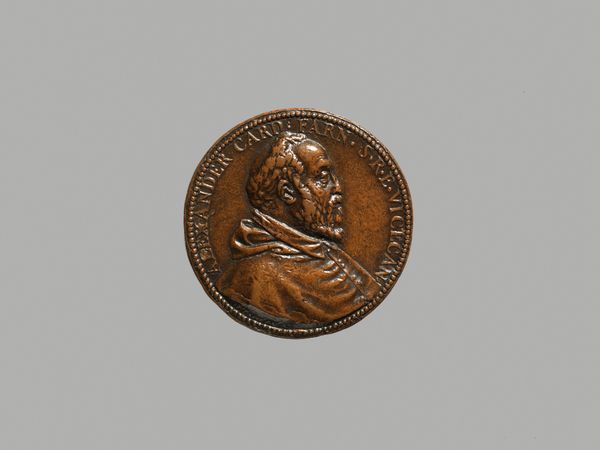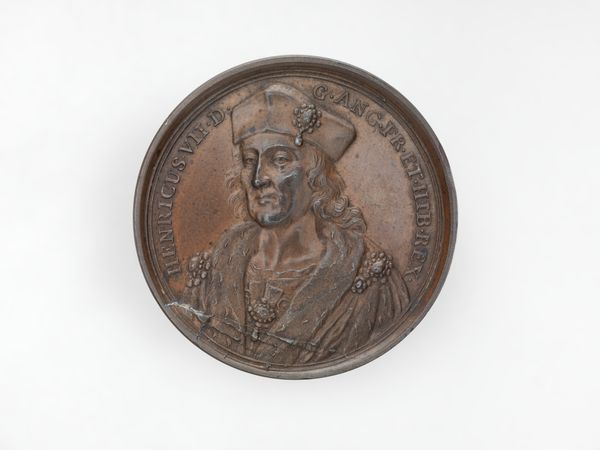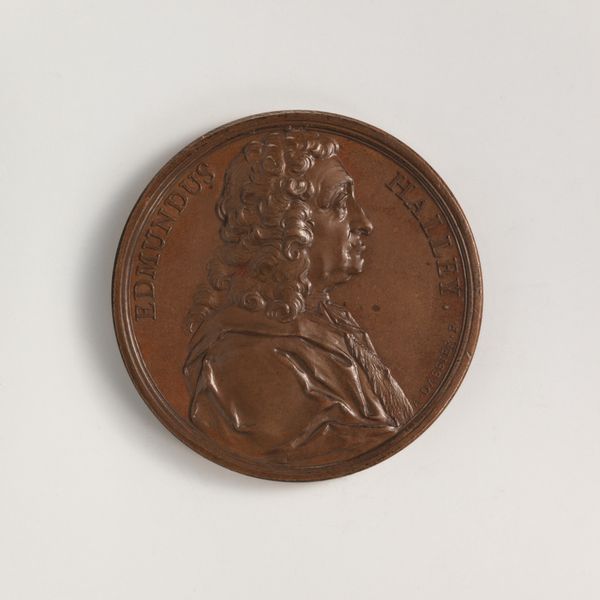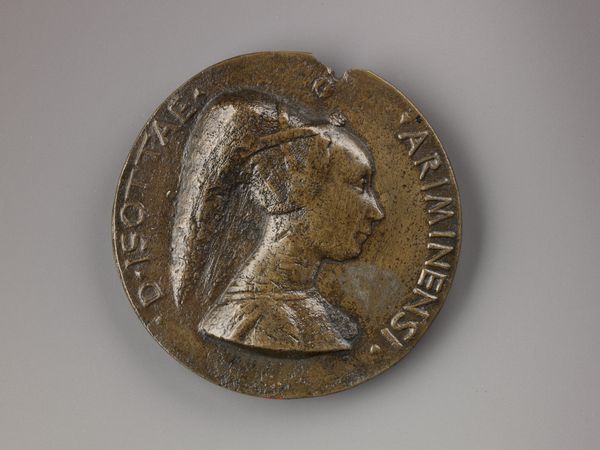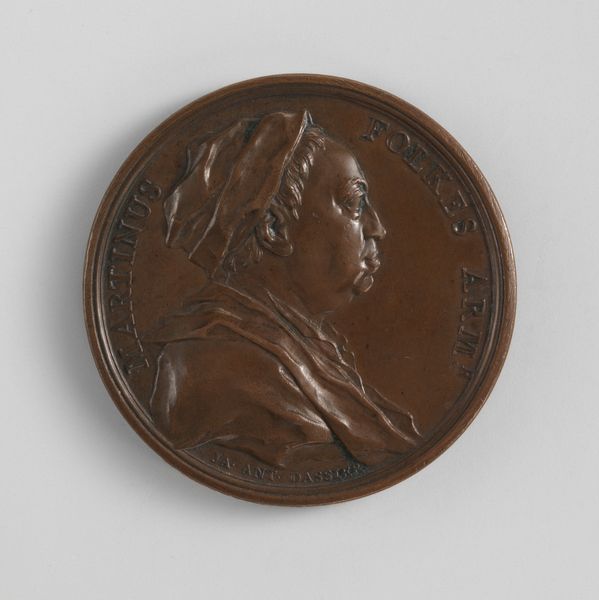
Lorenzo de' Medici, 'il Magnifico' (1448–1492) 1485 - 1495
0:00
0:00
metal, bronze, sculpture
#
portrait
#
medal
#
metal
#
sculpture
#
bronze
#
sculpture
#
carved
#
men
#
decorative-art
#
italian-renaissance
#
profile
#
statue
Dimensions: Diameter: 3 9/16 in. (9 cm)
Copyright: Public Domain
Curator: This bronze medal presents a profile portrait of Lorenzo de’ Medici, created by Niccolò Fiorentino between 1485 and 1495. It's quite striking. Editor: It is. My initial impression is one of restrained power. The bronze has a burnished quality that gives it an ancient feel, a sense of enduring presence. The simple design feels austere yet commanding. Curator: Indeed. The medal format itself speaks to power and status. Medals like these were commissioned to commemorate individuals or events, serving as both propaganda and historical record. Niccolò Fiorentino was one of the leading medalists of the Renaissance, and his skill in capturing likeness and character is evident here. Think of how these circulated. Editor: Precisely. Lorenzo's profile, encircled by his name and titles, serves as an instantly recognizable emblem. The profile view, harking back to Roman portraiture, lends him an air of classical authority and connects him to the great rulers of the past, like those Caesar busts. But the soft, almost melancholy expression on his face adds another layer. Curator: The iconography is definitely deliberate. As a patron of the arts and de facto ruler of Florence, Lorenzo cultivated an image of cultivated magnificence. Medals like these played a crucial role in shaping his public persona. His hairstyle alone makes an important statement of Florentine masculine identity. Editor: And that inscription, “Magnus Laurentius Medices.” Great Lorenzo de Medici. But is that all? Even through the classical presentation of power, is there perhaps something fragile there too? A vulnerability suggested by the somewhat downcast gaze? Or perhaps, just shrewd observation. Curator: That's a perceptive point. Perhaps Fiorentino captured something beyond the carefully constructed public image. He captured the awareness of immense social changes during a politically turbulent time for the Italian city-states. And his impact on the distribution of symbolic portraiture! Editor: Absolutely. It’s a potent reminder that even seemingly simple objects can carry complex messages about power, identity, and legacy. And what bronze, in its various manifestations, has meant throughout history! This is just another perfect illustration of cultural ideas, miniaturized, almost infinitely portable, a kind of ancient tweet. Curator: Well, this glimpse into Lorenzo through Fiorentino's eye helps connect us to both Renaissance portraiture and that ever-shifting dialogue between artist, subject, and historical forces. Editor: It reminds me again that even powerful people have an emotional inner life. Which the symbols of public life either hide or reveal in subtle, powerful ways.
Comments
No comments
Be the first to comment and join the conversation on the ultimate creative platform.
